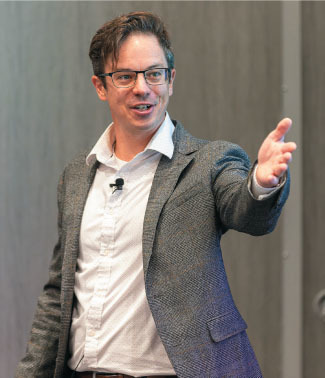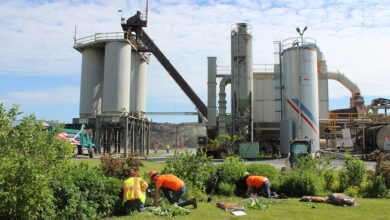Setting the Sustainability Standard

NAPA MIDYEAR MICRO SESSION TAKES DEEP DIVE INTO EMISSIONS BENCHMARKING DATA
BY TY JOHNSON
NAPA Vice President for Engineering, Research, & Technology Richard Willis, along with Ben Ciavola and Amlan Mukherjee of WAP Sustainability, provided an overview of data collected that could lay the groundwork for defining future federal standards for “low carbon” asphalt.
The microsession, Building a Better Benchmark, was part of NAPA’s Midyear programming on sustainability that included the inaugural The Road Forward Summit, where representatives from the U.S. Department of Transportation, the Environmental Protection Agency (EPA), and the Federal Highway Administration (FHWA) continued the conversation on sustainable construction materials procurement.

Willis thanked those in the audience who submitted plant production data for the industry average benchmarking program NAPA launched in May and suggested that a subsequent benchmarking data collection effort this winter should provide more time for participation.
“Nothing is completely finalized yet,” Willis said. “But we are going to be working heavily to try to get this wrapped up in the near future so that we can present data to FHWA and GSA to help influence policy decisions moving forward.”
Ciavola presented his analysis of the data, which included submitted data to the Emerald Eco-Label Environmental Product Declaration (EPD) tool from the additional benchmarking effort. The benchmarking data will also be used to help develop additional ENERGY STAR® tools for the asphalt industry. He noted on a heat map where the data came from regionally and how truck transportation was a major factor in emissions, which was especially high in areas where materials undergo multimodal freight transit.
“This benchmarking data collection process has been really successful from our perspective,” Ciavola said. “We have a strong handle on how this industry is performing and what we can do to improve these emissions numbers and we really appreciate that your organizations have gone out of their way to support us with this data collection. Now, where do we go next? Working with customers to specify lower carbon mix. The customers have control in a lot of these instances. If you’re in Florida, you have hard constraints just based on your geology. They need to know about that. They need to understand that and we need to work together to figure out how to effectively design these programs, thresholds, and incentive structures, in order to help these Florida producers perform better, but also not be left behind.”



